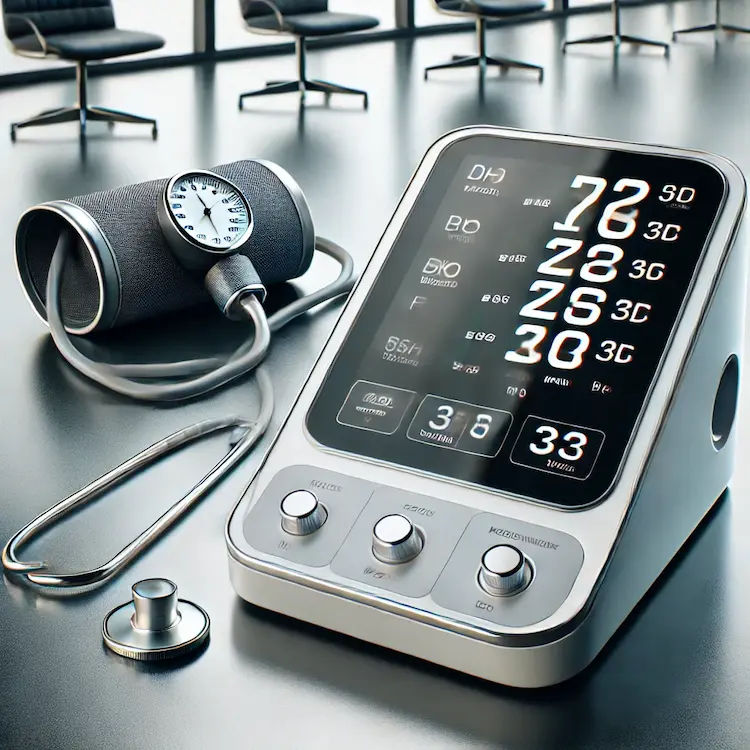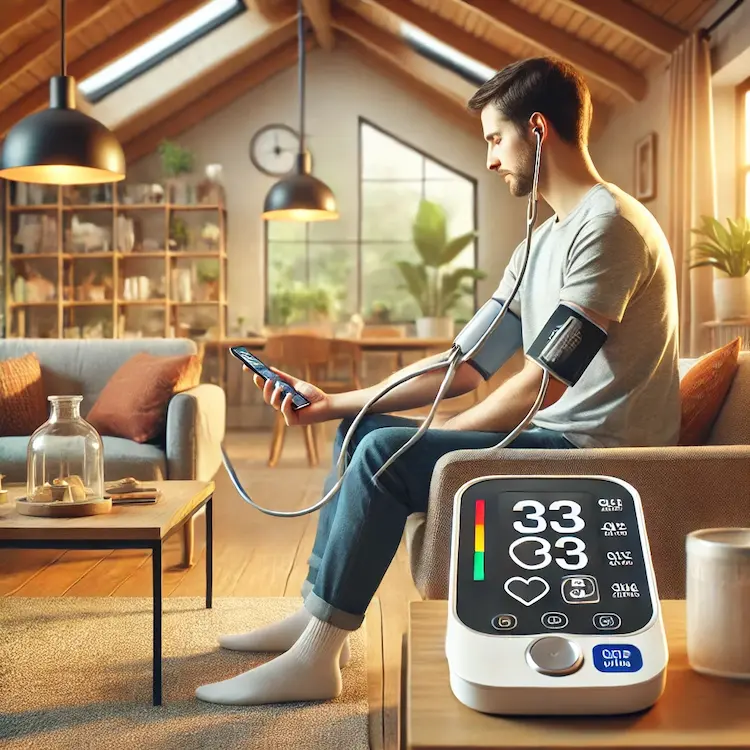Sphygmomanometers, devices used to measure blood pressure, have undergone significant transformation over the decades. From traditional manual mercury models to today’s state-of-the-art digital monitors, these instruments have evolved to become more accurate, user-friendly, and safe. This article explores the development of new and improved sphygmomanometer technologies, discussing their history, the impact on healthcare, and practical advice for both clinicians and patients.
Introduction to Sphygmomanometry
The sphygmomanometer is a critical diagnostic tool in the medical field. Accurate blood pressure measurement is essential for diagnosing hypertension, cardiovascular disease, and other health complications. Traditionally, mercury sphygmomanometers were the gold standard due to their accuracy. However, environmental concerns and the need for ease-of-use have spurred innovation in blood pressure monitoring technology.
The Evolution of Sphygmomanometer Technologies
Historical Overview
- Mercury Sphygmomanometers:
- Advantages: High precision, long clinical use.
- Limitations: Mercury hazards, bulky design, and the need for trained professionals.
- Aneroid Devices:
- Advantages: Portability and reduced mercury usage.
- Limitations: Prone to calibration errors if not regularly maintained.
- Digital Sphygmomanometers:
- Advantages: User-friendly, reduced operator error, automatic inflation/deflation.
- Limitations: Variable accuracy in patients with arrhythmias and dependency on power sources.
Innovative Approaches in Recent Technologies
Recent advancements have led to the development of digital devices equipped with advanced sensors and wireless technology. These innovations emphasize improved accuracy, ease-of-use, and integration with modern healthcare systems:
- Oscillometric Technology:
This method detects the oscillations in the arterial wall during cuff deflation to provide readings. Many digital sphygmomanometers use oscillometric technology, which is less sensitive to operator variability. - Wireless Connectivity:
Modern devices feature Bluetooth and Wi-Fi connectivity, enabling seamless data transmission to smartphones, tablets, or electronic health record (EHR) systems. - Automated Inflation and Deflation:
Newer designs offer fully automated processes that reduce human error, ensuring more consistent readings. - Enhanced Algorithmic Analysis:
Advanced algorithms interpret pulse and blood flow data, factoring in patient movement or other variables that might otherwise result in erroneous readings.

Comparative Analysis of Sphygmomanometer Methods
Understanding the strengths and limitations of various sphygmomanometer technologies is essential for choosing the right device for specific healthcare settings. The table below compares three primary categories:
| Type | Advantages | Limitations | Best Use Case |
|---|---|---|---|
| Mercury Sphygmomanometers | High accuracy, long-term track record | Environmental hazards, requires training | Clinical settings where precision is paramount |
| Aneroid Sphygmomanometers | Portability, reduced chemical hazards | Calibration drift, mechanical wear | Routine measurements in non-critical settings |
| Digital Sphygmomanometers | User-friendly, automatic functions, connectivity | May be affected by movement, battery dependent | Home monitoring, ambulatory care, telemedicine applications |
Each of these options contributes uniquely to patient care. While traditional mercury devices still set the benchmark for accuracy, the innovations in digital devices have broadened accessibility and ease-of-use, particularly in community healthcare and remote monitoring scenarios.
Health and Societal Impact
Improved Patient Outcomes
Accurate blood pressure monitoring is critical for the early detection and management of hypertension. By ensuring reliable readings, modern sphygmomanometers:
- Reduce Diagnostic Errors: Enhanced precision leads to better diagnosis, reducing the risk of mismanagement.
- Facilitate Remote Monitoring: Wireless and digital integrations allow patients to monitor their health at home, leading to timely interventions.
- Boost Patient Engagement: Easy-to-read digital displays and automated recording encourage patient participation in health management.
Societal Benefits
- Public Health Impact: With cardiovascular disease being a leading global cause of death, improved monitoring devices contribute to reduced morbidity and mortality rates.
- Economic Considerations: Automated and digital sphygmomanometers can reduce labor costs in clinics by minimizing the need for specialized training while integrating with telehealth platforms.
- Environmental Impact: The shift away from mercury-based devices towards eco-friendly alternatives improves both the safety and sustainability of medical practices.
Advancements in Research and Future Directions
Continued research in biomedical engineering and digital health is pushing the boundaries of sphygmomanometer technology. Some emerging areas include:
- Artificial Intelligence (AI) Integration: AI algorithms are being developed to detect irregular heart patterns and predict cardiovascular events based on continuous monitoring data.
- Wearable Technology: Integrating blood pressure monitoring into wearable devices (e.g., smartwatches) could revolutionize personal health monitoring, providing continuous rather than episodic data.
- Remote Calibration and Maintenance: Future models may offer self-calibrating features, reducing the need for periodic maintenance and ensuring sustained accuracy.
These developments promise to enhance the understanding of blood pressure trends and contribute to proactive health management strategies.
Practical Advice for Health Practitioners and Patients
For Health Practitioners:
- Device Selection: Evaluate the patient demographic and clinical setting. For instance, elderly patients or those requiring regular monitoring may benefit from digital devices with automated features.
- Regular Maintenance and Calibration: Even with advanced technology, periodic calibration of sphygmomanometers ensures reliable readings.
- Training and Education: Ensure that staff are well-trained on new technologies and understand the potential error margins of digital readings.
For Patients:
- Home Monitoring: If prescribed a digital sphygmomanometer for home use, follow the manufacturer’s guidelines to ensure accurate self-measurement.
- Keep a Log: Maintain a record of blood pressure readings to assist healthcare providers in monitoring trends and making informed treatment decisions.
- Stay Informed: Engage in discussions with healthcare providers about how technological advancements can be utilized for personalized care plans.

Practical Tip: Always verify that any digital sphygmomanometer in use has been validated according to recognized international standards, such as those set by the European Society of Hypertension or the American Heart Association.
Visual Aids for Clear Comparisons
To assist readers in comparing different technologies, consider the following visual elements:
Table: Comparison of Sphygmomanometer Types
| Type | Key Feature | Main Benefit | Limitation |
|---|---|---|---|
| Mercury | Precision | High accuracy | Environmental hazards |
| Aneroid | Portability | Lightweight and easy to transport | Calibration requirements |
| Digital | Automation and Connectivity | Ease-of-use, data integration | Battery dependency, movement impact |
Adoption Trends of Digital Sphygmomanometers
A bar chart or line graph can show the increase in usage of digital devices compared to traditional models over the past two decades. This visualization helps illustrate how technology evolution aligns with public health trends.
Conclusion
The evolution of sphygmomanometer technologies reflects a broader trend in medical device innovation, where accuracy, ease-of-use, and environmental considerations drive design improvements. Modern digital sphygmomanometers equipped with oscillometric technology, wireless connectivity, and automated features have not only improved measurement accuracy but have also facilitated remote patient monitoring and proactive healthcare management.
Key Takeaways:
- Evolution: Transition from mercury to digital devices underscores significant technological and environmental advancements.
- Benefits: Improved accuracy, patient convenience, and integration with healthcare systems.
- Future Directions: Emerging AI and wearable technology signal the next frontier in blood pressure monitoring.
- Practical Advice: Regular calibration, proper device selection, and maintaining a personal health log are crucial for optimal use.
For both clinicians and patients, staying updated with these technological advancements means better health outcomes and a more proactive approach to managing cardiovascular health.


